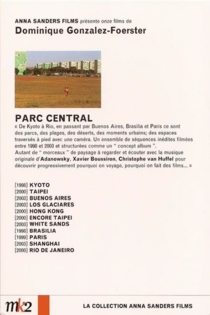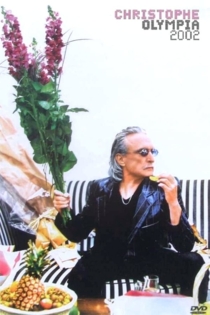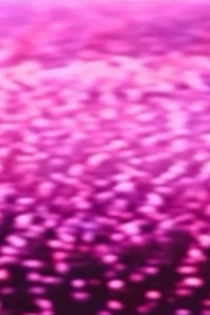
Dominique Gonzalez-Foerster
2021The Magic Skin
Dominique Gonzalez-Foerster, Dominique Gonzalez-Foerster
Adaptation of Honoré de Balzac's "The Skin of Sorrow" or "The Wild Ass's Skin" (1831), said to be the last novel read by Sigmund Freud before his death. While reading it, he would have said: "This is the only book I needed".
The Magic Skin

Atomic Park
Dominique Gonzalez-Foerster
Atomic Park is a place in the White Sands desert (New Mexico), not far away from Trinity Site, where the first atom bomb exploded in 1945. This national park provides an ambivalent landscape, as well suited for a picnic as for ballistic tests. A white desert, like a natural exhibition hall every movement can provoke diverse interpretations. Like a faint echo we hear Marilyn Monroe's desperate monologue and accusation about man's violence from The Misfits (1961). - Torino Film Festival
Atomic Park

Romilly
Dominique Gonzalez-Foerster
“Romilly” follows a young girl in school uniform larking amongst the bunk beds in the Turbine Hall with a group of friends. We focus on her captivating face, her red hair and rosebud mouth, as she chats with her friends, looks at her hand-held screen, reclines, and sleeps on the bunks. - LEFFEST
Romilly

De Novo
Dominique Gonzalez-Foerster
In De Novo she turns the camera on herself, divulging the complicated thought processes behind the works she made for her five different invitations to present at the Venice Biennale. The video shows her unafraid to question the contexts of her own work in relationship to an ongoing inquiry into the nature of exhibition, exposition and narrative mythologies. - TIFF
De Novo

Marquise
Dominique Gonzalez-Foerster
For her contribution to the 2006 São Paulo Biennial, Dominique Gonzalez-Foerster used the work of Oscar Niemeyer as a starting point for an exploration of the relationship between the exhibition space and the urban context, through an intervention in which she reproduces and multiplies existing columns, reconfiguring the reading of the rhythm and proportions of modern architecture. The Marquise, in Sao Paulo’s Parque Ibirapuera, an enormous concrete canopy designed by Niemeyer in 1954, is therefore the subject and setting of this film, in which the artist reveals her interest in ‘tropical modernism’ and develops certain recurrent themes in her work, such as ideas of shelter, playground or potential space. - MNAC
Marquise

Park Central
Dominique Gonzalez-Foerster
A collection of 11 short poetic psycho-geographic portraits of cities and spaces from artist Dominique Gonzelez-Foerster. Ranging from the revisiting of a scene of Ming-Liang Tsai's 'Vive l'Amour' through the eyes of its protagonist, to a ticker-tape parade in Buenos Aires, from a reflection on the filmic qualities of Brasilia,to an observation of the observers of the 1999 eclipse in Paris. All soundtracked by a sensitive balance of field-recordings and carefully chosen delicate music.
Park Central

No Return
Dominique Gonzalez-Foerster
Noreturn examines Gonzalez-Foerster's own 2008 Turbine Hall installation TH.2058, which imagined the gigantic space fifty years in the future as a dystopian nightmare of steel bunk beds under the watchful gaze of Louise Bourgeois' Spider, an H. R. Giger-like touch. In the video, she unleashes a group of schoolchildren on the installation and watch as they move from playfulness to a recognition of the installation's menace, finally huddling under a Henry Moore sculpture. - TIFF
No Return

Gloria
Dominique Gonzalez-Foerster
Gloria consists of a 5-minute looped tracking shot in a park in the centre of Rio, in Brazil. This park is a copy of a French-style garden, but does not have perfectly straight contours. The tropical climate and the abundance of the vegetation constantly overruns all human efforts to make it a sophisticated park. A woman’s voiceover soliloquises the tropicalisation of this garden and the possibilities for fictions that she could create in this place. - New Media Encyclopedia
Gloria

Parc Central
Dominique Gonzalez-Foerster, Dominique Gonzalez-Foerster
"Central Park" is composed of 11 films that offer a visual, sound and poetic journey through 11 cities crossed by the artist. Fascinated by the city, space and urbanism, Dominique Gonzalez-Foerster has been developing the concept of "tropical modernity" for several years, starting from the cohabitation and the confrontation between architecture and vegetation. It is around this research that she designed "Central Park" 11 films : - Kyoto (1998) - Taipei (2000) - Buenos Aires (2003) - Los Glaciares (2003) - Hong Kong (2000) - Encore Tapei (2000) - White Sands (2003) - Brasilia (1998) - Paris (1999) - Shangai (2003) - Rio de Janeiro (2000)
Parc Central




